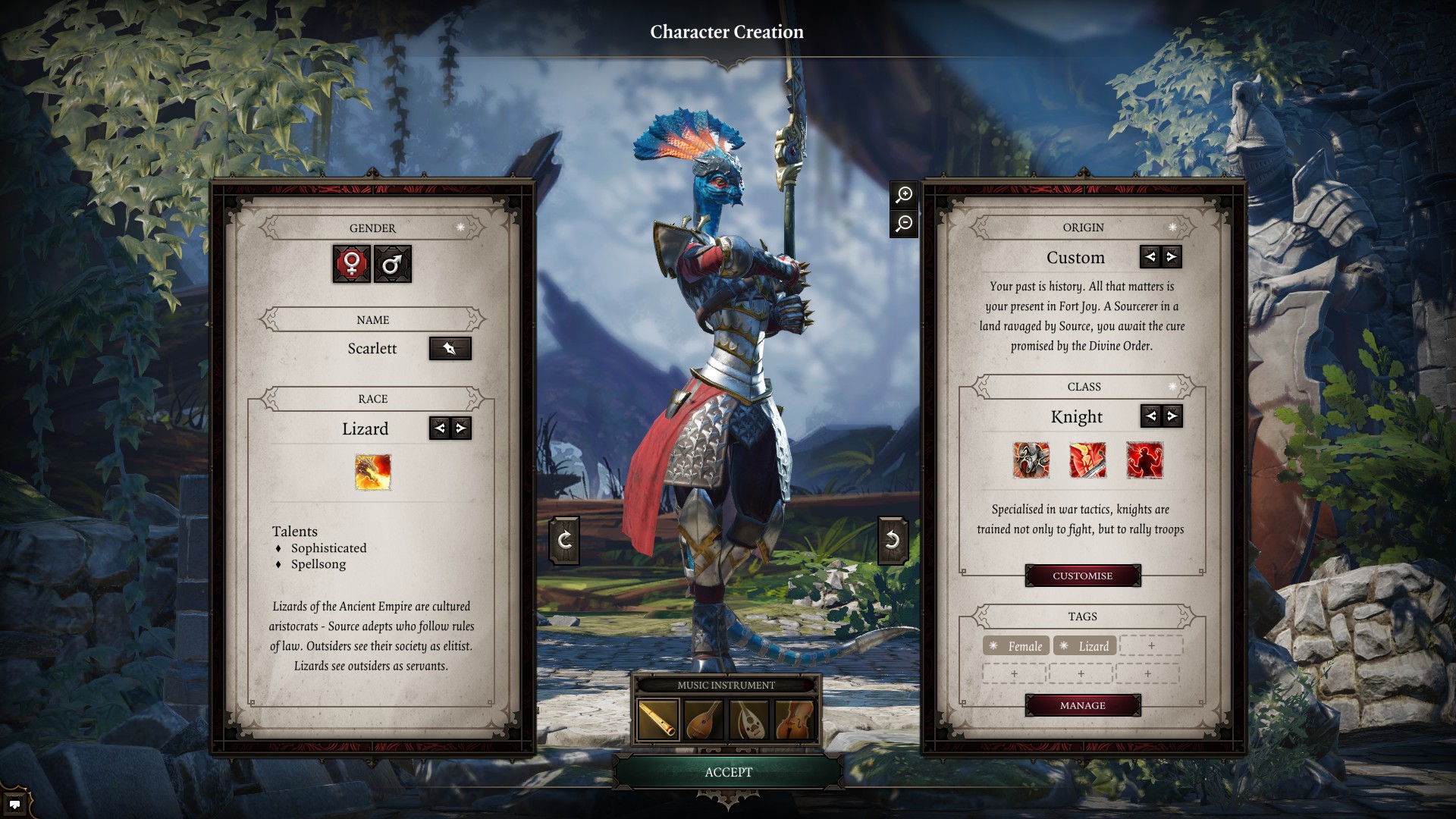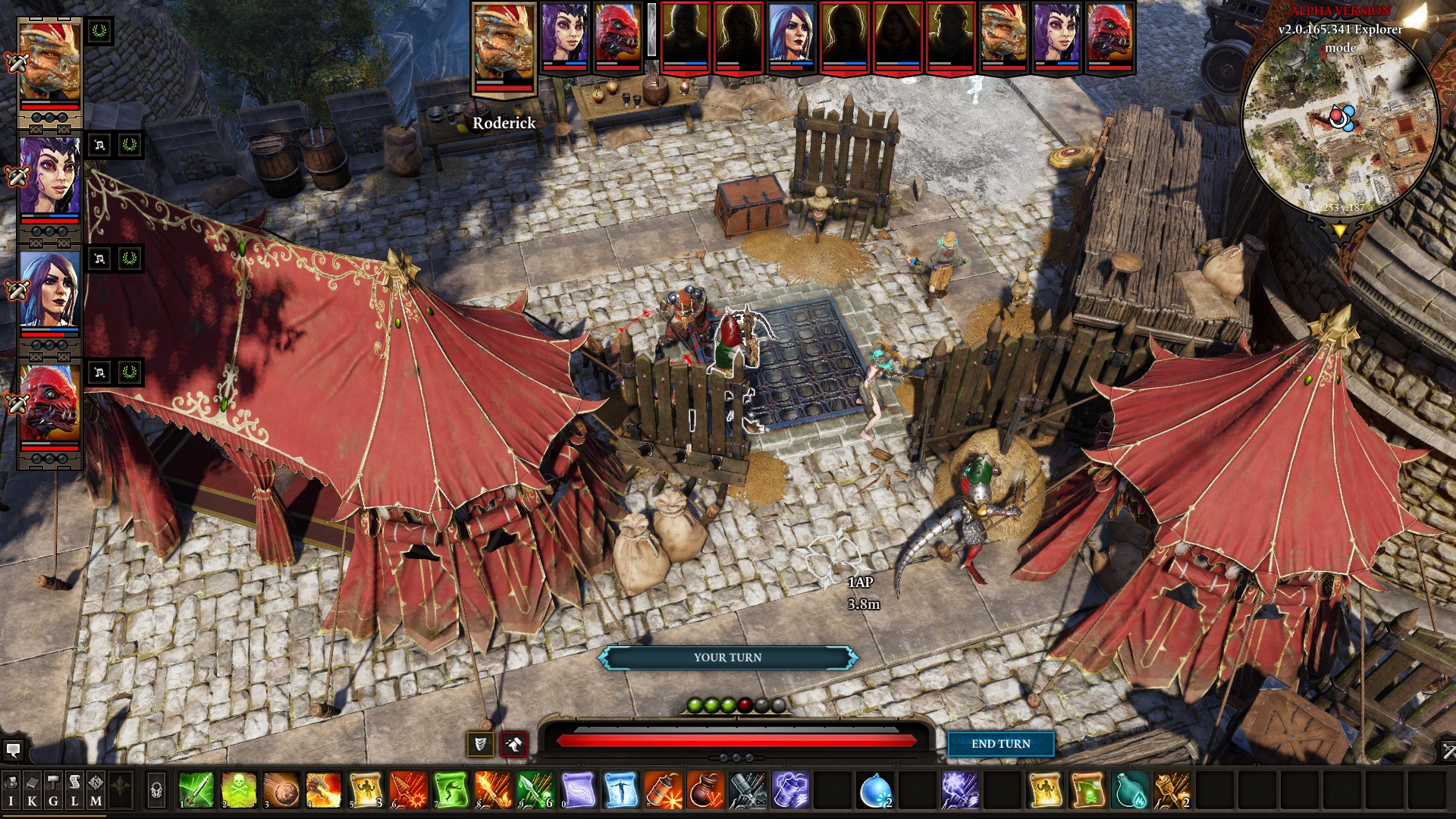
Once you’ve crafted a character and are dropped into the game world, you’ll have to start dealing with its inhabitants, both friendly and hostile. Running into battle half-dressed waving a sharpened stick around may sound like fun, but it’s definitely a recipe for getting killed. With Original Sin 2’s combat, Larian has added a new strategic element by changing the way armor works. Rather than just granting your character some amount of defense, almost every piece of armor in Original Sin 2 will have one of two (or sometimes both, depending on the quality of the gear) stats: physical armor or magical armor. These act as a shield against their respective attack types. For instance, if an enemy attacks you with a sword in combat, the damage they deal will be absorbed by your physical armor first. Once your physical armor is depleted, you will then start taking damage from physical attacks. The magical armor works in a similar fashion, only with magic-based attacks. The two armor types also act as a kind of resistance to status effects, such as bleeding or being stunned.
This addition means that combat relies far more upon tactics and strategy than before as enemies, too, have physical and/or magical armor. Rather than just picking a target and focusing all of your attention on them alone, you have to consider what each enemy’s weakness may be. That soldier may have a lot of physical armor but no magic resistance, while the bowman has a little bit of both. How you choose to divide up your team and which enemies you take down first can make all the difference between victory and defeat. If you’re playing alone, then all of those decisions are entirely yours to make. If you’re playing with friends, then (ideally) the entire group has a say in how to best approach a situation and what to do; including backstabbing you.
For Original Sin 2, Larian Studios is describing the co-op as “competitive co-op.” This means that at any time, you could decided to just stab your friends in the back and attack them. Maybe you disagree with them about the resolution of a particular quest, maybe they stole something from someone and you feel they should give it back. If you really want to get into the role-playing spirit, the motivations for why you would want to turn on your friends may stem from your character’s background and goals.

The rochambeau system that was used in Original Sin to resolve inner party disputes during NPC dialogue has been removed, so while you can voice a different opinion from the party leader, he or she gets the final say. If you want to settle your beef, you’ll be doing it with your fists. Outside of the additional players and freedom of action, co-op still behaves in much the same way that it did in the first title with each player controlling his or her in-game character, choosing how to spend their points when they level, and working out with your teammates who should get what loot as it is entirely free-for-all.
While all of these enhancements and shifts towards a game that is more like a Dungeon and Dragons campaign sound good in theory, it’s too early to say whether they’re good in practice. For me, the most important element of any good D&D campaign is the Dungeon Master: someone that helps move all of the players in a particular direction, ties together loose narrative threads, and, should a player “go rogue,” find a way to make it all still work. Within the world of Original Sin 2, there is no such entity. If you decide to join forces with the opposing side in a battle and turn against your companions, the enemies themselves don’t seem to care. You’re still a foe and even if all your comrades are dead, they’ll still attack you.
Perhaps you all agree that you don’t like the way a quest is going and you change things up a bit; attack and kill the person you’re supposed to be helping. That quest, then, has no resolution and your actions are free of consequences. Providing players with more freedom and possibilities in a game means you also have to build in more to account for all of that, and I’m just not seeing that in Original Sin 2’s current Early Access/alpha state. The game is far from being finished so maybe some of that will be addressed in later updates/patches.
If you were a fan of Original Sin, then chances are good that you’ve already bought into the sequel, and I don’t blame you. I look forward to seeing how the game develops and where it will end up. If you’re interested in the game but not quite sure, I definitely recommend waiting. Aside from the fact that all character/story progress will be wiped several times before the final product is released, there’s still a fair bit of room for growth and improvement as far as the cooperative interactions are concerned.